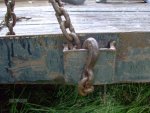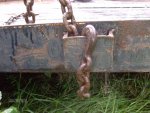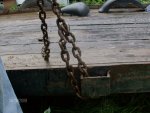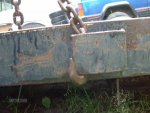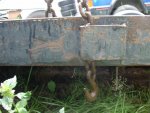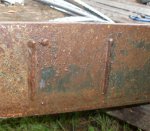rmgill
Active member
- 2,479
- 14
- 38
- Location
- Decatur, Ga
The crossing doesn't weaken the chain. Tighter angles increases the force depending on what the vectors of that force are.
TAke a rope, spread it across a wide angle, pull down in the middle. the forces pulling inwards are FAR higher than the force pulling down. It's a sort of leverage. Rock/Mountainclimbing rigging manuals warn against this as a method.
Now, crossing chains up between sides of a vehicle CAN be just fine. It just depends on which way the force vectors are when the load tries to keep moving after the truck has stopped.
TAke a rope, spread it across a wide angle, pull down in the middle. the forces pulling inwards are FAR higher than the force pulling down. It's a sort of leverage. Rock/Mountainclimbing rigging manuals warn against this as a method.
Now, crossing chains up between sides of a vehicle CAN be just fine. It just depends on which way the force vectors are when the load tries to keep moving after the truck has stopped.








